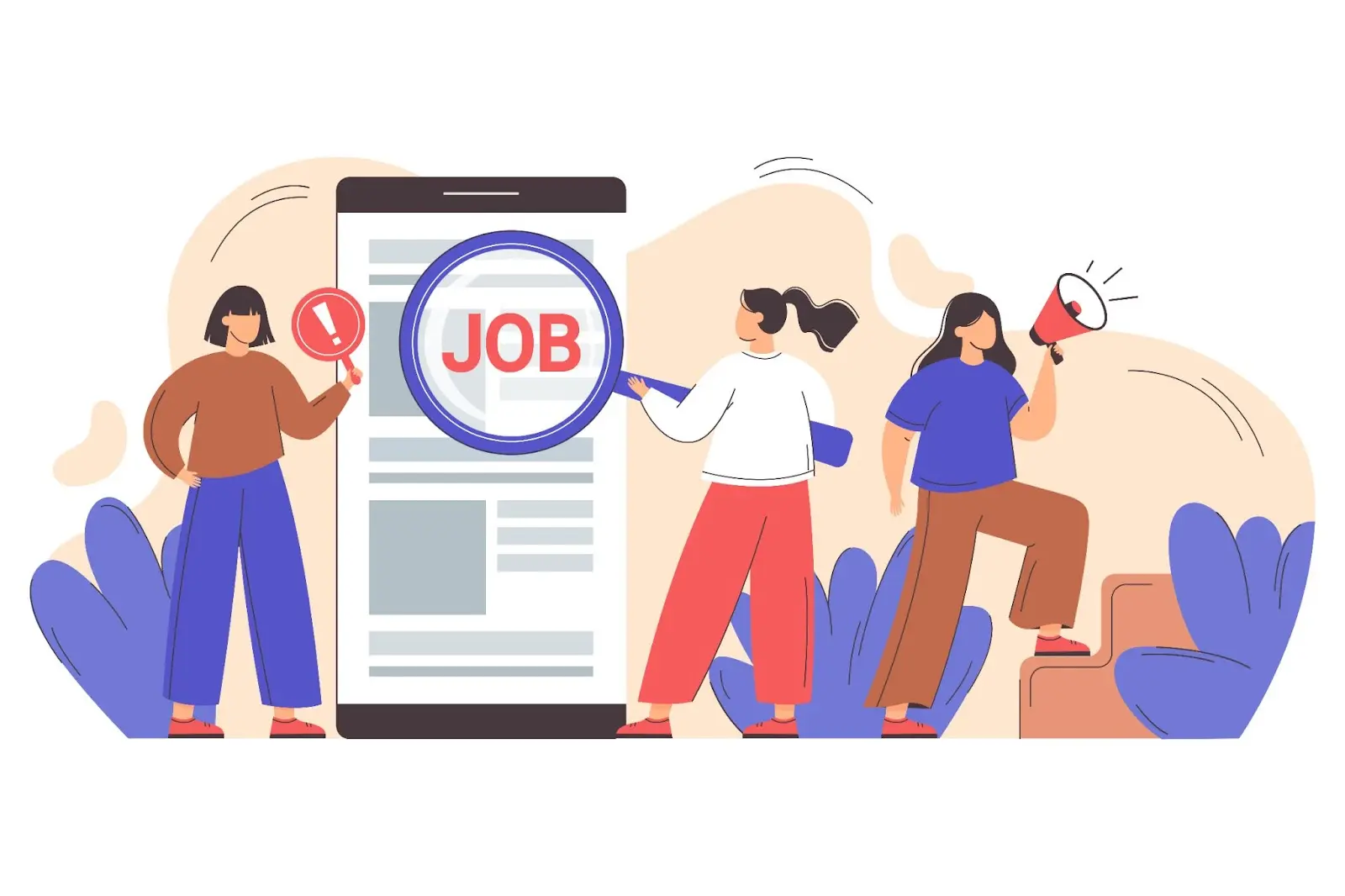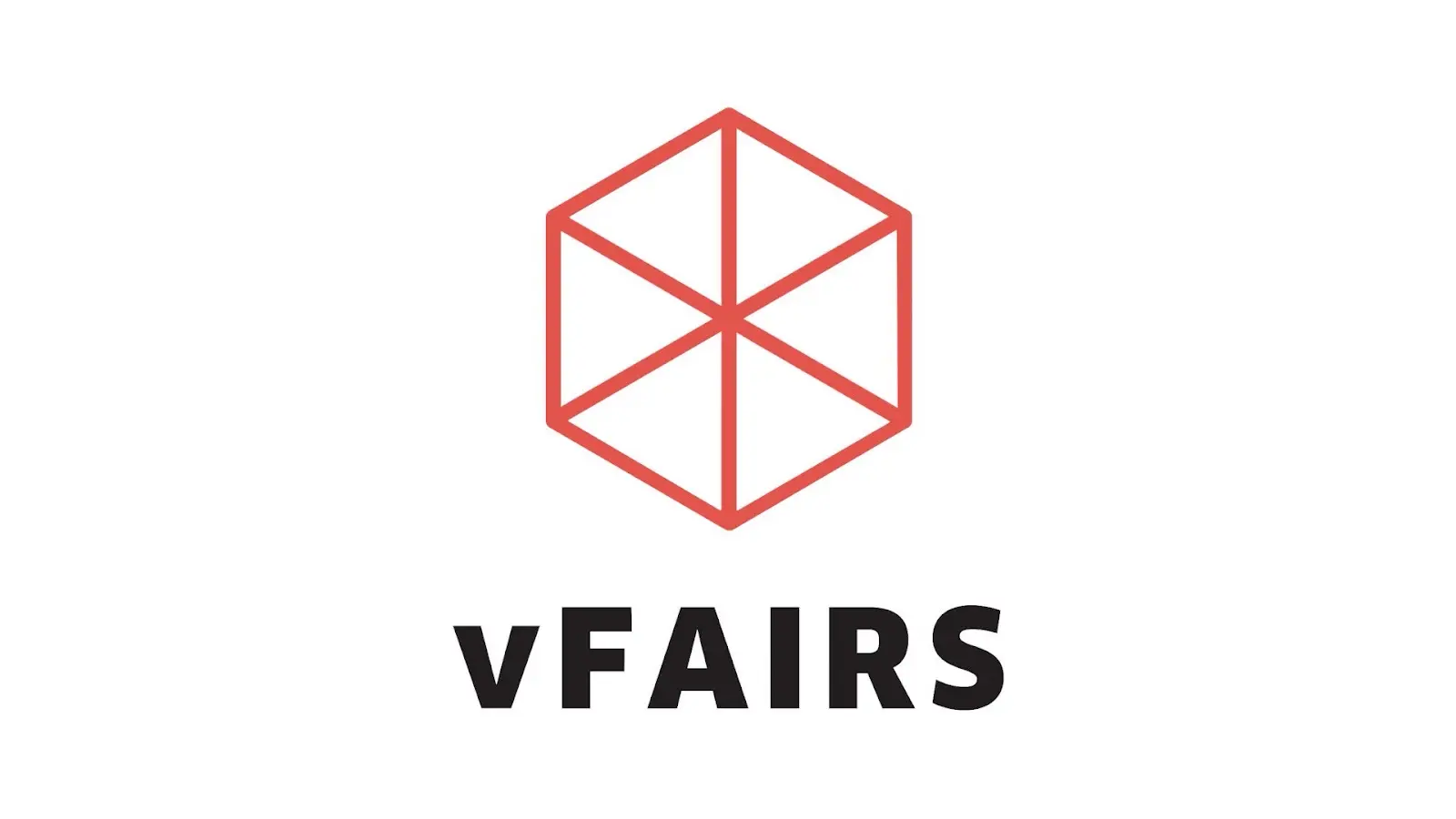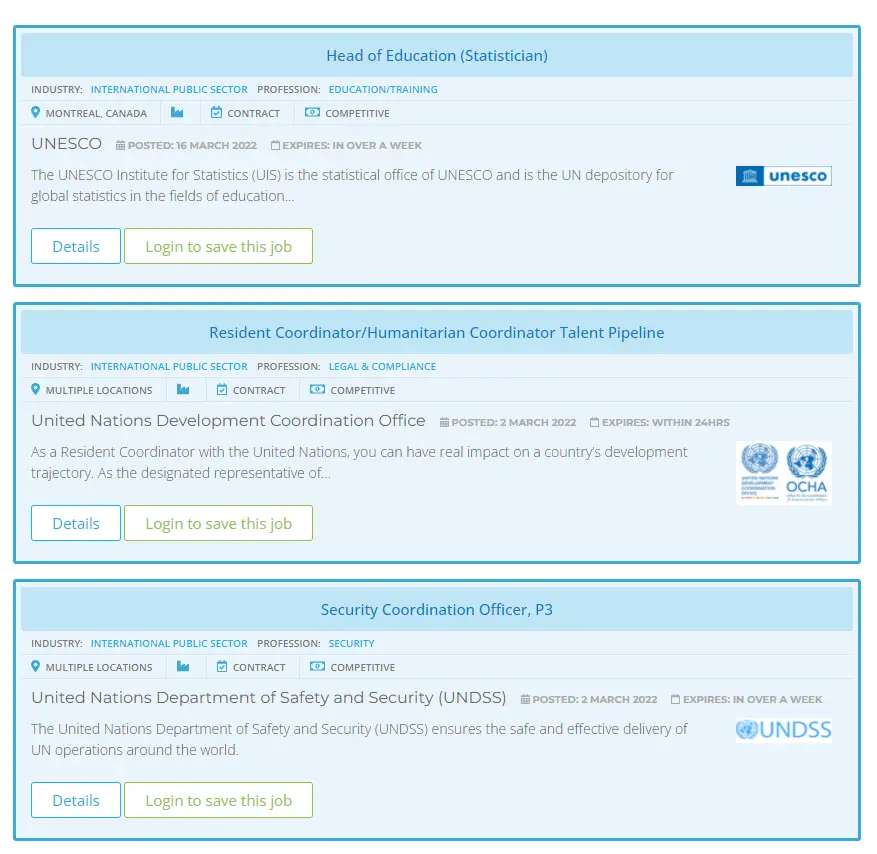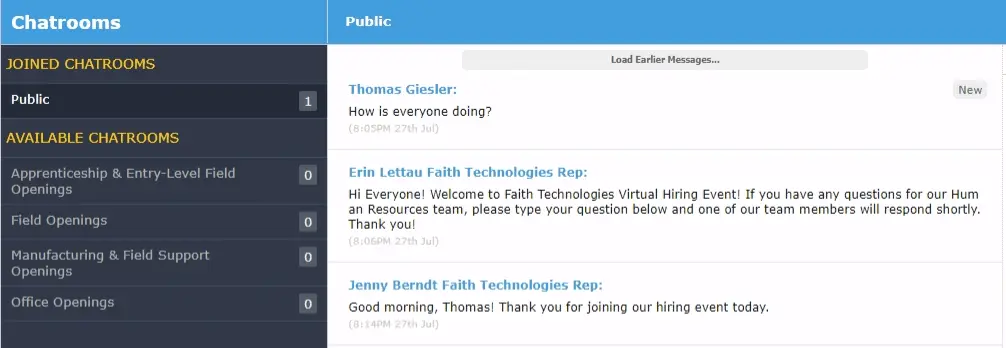Virtual Career Fair: Definition, Best Practices, and Case Studies
Even as the global pandemic is slowly becoming a thing of the past, virtual recruiting is here to stay. Virtual recruiting, at heart, strikes a lot of similarities to traditional campus recruiting. However, recruiters have more “legroom” regarding scaling, design, and overall pricing.
For event hosts eager to attract quality candidates, let us discuss how to get the most out of your virtual event through these best practices!
Compared to the traditions, so there are things no ultimate guide tells you. But we will. Let’s dive in!
I. So, What Is a Virtual Career Fair?
As recruiters turn their sights on young, tech-savvy candidates like those from Gen Z, virtual recruitment seems like their best bet to reel in quality candidates.
There are many ways to start with virtual recruitment, such as programmatic advertising, video interviewing, etc. However, we will focus on another increasingly popular approach – virtual career fairs.
Virtual career fairs can be understood as another approach to traditional career fairs. Virtual fairs break all the limitations companies run into when organizing or participating in an offline one. Essentially, you are moving the venue from a physical location to a webinar service, which looks something like this:

Depending on your budget for virtual career fairs, the interface can be 2D or 3D. But in general, virtual career fairs imitate an actual auditorium with halls, lobbies, and virtual booths.
II. Benefits Of Virtual Career Fairs
There are countless reasons why a virtual career fair trumps its traditional counterpart. And here are some that might spark your interest as a recruiter.

1. Transcending geographical barriers
Since virtual career fairs are held online, they are practically accessible to everyone with a device that has an internet connection. Virtual career fairs prove to be extra helpful and fitting in times like this when social distancing is advised.
The number of virtual career fairs aiming to bridge international employers and candidates is not hard to find. Schools like the University of Victoria host frequent virtual events to connect students with potential employers.
There are also privately hosted career fairs, such as those held by the United Nations and Asian Infrastructure Bank, which require you to be more active in keeping in touch with their network activities.
2. Saving Time and Money
The budget for virtual events looks very different from traditional physical events. Instantly, you will see the upside of saving time and money. You won’t have to hire as many people as event managers and event planners, and you definitely don’t have to buy any desserts if you are hosting the events on your own
The nice thing about virtual fairs is that you can customize the event’s scale and features per your needs and budget. Both will require marketing and advertising, but virtual fairs will enjoy the internet landscape rather than bear the headache of material physical productions.
Another benefit of recruiting in a virtual career fair is how customizable the elements are. Designing and putting together a physical booth is often more costly, both in funding and human resources.
For a virtual booth, booth design and setup can be done effortlessly on a computer without the limitation of material cost. Want to see how wild virtual booth design can be? Check out vFair’s various success stories and how their clients design their booths.
3. Higher Attendance (Likely)
You’re saving time and money not just for your company but also for job seekers. Virtual career fairs significantly reduce the time and travel costs for visitors. With practically no excuses not to go, you will likely see a spike in the attendance traffic.
4. Exciting Candidates’ Experience
Do you know that a job ad accompanied by a video gets about 36% more applications?
With a virtual career fair solution, features like interactive videos or event gamification can be the recruiters’ trump card in attracting potential candidates. A 3D virtual environment is also becoming more common in virtual events. It provides an additional atmospheric touch, making candidates feel like they are in a live venue.
Virtual career fairs offer just the right tools to enhance job seekers’ experience. Here, you can have immersive webinars, PDF handouts, live recordings, etc. basically everything that stimulates the eyes.
Coming back to the booth design topic, the event host can customize the theme to appeal to both applicants and employers. One example of this is the case of Loyola Schools Office of Placement and Career Services, where their 2021 virtual career fair was designed to uphold the student’s cultural heritage.
5. Measurable Results
Since everything happens online, you can utilize your virtual career fair software to monitor real-time data and identify which employers are most preferred, what job types receive the most attention, webinar views, who are unique and recurring visitors, etc.
And while we’re on the topic of data, working online also minimizes the tedious paperwork that slows you down, and creates a more organized database of potential candidates. Many virtual career fair software can provide features like resume search tools, and you, as an exhibitor, can search and shortlist talent almost instantly, remarkably shortening the recruitment funnel.
III. Virtual Career Fairs Platforms
1. vFairs

Founded in 2008, vFairs offers a platform to host various online events such as training, trade shows, expos, job fairs, etc. vFairs’ strengths lie in their creative and sophisticated visuals, alongside a plethora of functionalities. Customers reported that the platform looks like an actual exhibit hall, which is more than what they offer.
However, functionality is a double-edged sword since some customers also say there was so much to explore that they have a reasonably hard time navigating around the platform and some tiny, negligible issues with the chatroom features.
2. Brazen Virtual Career Fair Platform

Founded in 2007, Brazen offers various tools to help recruiters connect with candidates, including sourcing automation, chatbots, online chat rooms, etc. Brazen pays extra attention to communication between employers and job seekers, enabling recruiters to chat with multiple candidates at once.
That said, Brazen is not for everyone. It typically works best with larger companies with high-volume recruiting needs. So, if your organization houses less than 1000 employees, you might want to explore the other options.
3. CareerEco
CareerEco was founded in 2009 and specialized in hosting virtual career fairs and online events for universities to connect graduates and alumni with recruiters. In addition to saving time and money with online events, they also emphasize the environmental benefits of virtual career fairs.
4. Lee Hecht Harrison

This company was founded back in 1967 and is a renowned name in the HR field, but it only started hosting virtual career fairs a few years back. LHH’s career fairs are free for recruiters, and they take care of the setup and marketing! But yes, “free” comes with a price – their online events are only held a few times a year at predetermined dates (usually from 12 pm to 4 pm). Moreover, LHH’s virtual career fairs aren’t narrowed down by industry or position, so seeking talent in such a large and general pool is not easy.
IV. Virtual Career Fairs Best Practices For Your Inspiration
1. Set up Information Desks
Just like any other fair or event on Earth, there has to be at least 1 info desk so visitors can ask around just in case they’re lost or have any concerns. This enables better navigation and a more well-rounded experience for the visitor.
On February 12th, 2020, the Aviation Job Board hosted an online Aviation & Aerospace Job Fair, and this is one of the many solutions they deployed. Along with many other strategies, they managed to attract 3400+ job seekers to the fair, with the total booth visits exceeding 7900.
2. Customize Branded Booths
It goes without saying career fairs are the place to push your branding. It’s a densely packed ocean of potential candidates walking around, exploring choices like a customer at a buffet. To attract them in the first place, you have to be as visually compelling as possible.
Make the most of your allotted digital space and be creative with your booths. Not only that, you can set up virtual representatives standing there, ready to present or answer any questions a bypasser can have.
Unilever, considered to be one of the best companies to work for in Turkey by Bloomberg Businessweek Turkey and Realtor Consulting 2018, decided to set up customized booths for all departments. This is specifically aimed at streamlining branding and communications.
3. Provide Downloadable Materials
You have surely noticed an underlying trend here. I’m stating the obvious: a host should be included in typical career fairs. But that’s the point. Virtual career fairs should be as close to traditional career fairs as possible to help visitors quickly familiarize themselves.

So provide virtual handouts, please. They leave a long-lasting impression on your company and also remind whoever has them of your presence. Also, digital handouts are good for the environment; no paper is used! If you are a company trying to go green, you should definitely be in on this.
The Singapore Workforce Development Agency (WDA) took this one step further. They provided E-Resources consisting of a library of recorded webinars, Jobsbank access, and advice from experts, making the job seekers’ experience more engaging than ever.
They generated almost 3000 registrations, more than 2100 visits, and 841 tab clicks.
4. Provide Chat and Technical Support
No matter how much they resemble traditional fairs, virtual career fairs are a new environment for some people. That entails many unexpected technical problems or just confusion. That is inevitable, so always have a chat and technical support ready for first-time users. They will appreciate it.
5. Run Real-Time Job Boards

This is solely for the browsing of job seekers. Think of it as street signs, informing fair visitors of where to go, what industry is there in this area, what job types or companies they can find here, etc.
Not only will real-time job boards assist with job seekers’ navigation, they will also help to increase your brand visibility. Be prepared for a rise in traffic!
6. Set Up Real-Time Reminders
You can do this by simply putting a small virtual timer at the bottom of the screen that signals how much time is left in this session. Sticking to the predetermined agenda will do you a world of good.

First of all, you don’t want to waste people’s time by speaking more than you should. Job seekers have things to do and places to be. They can’t stick around for too long.
Secondly, just like a traditional career fair, you do not want to keep your prospects waiting in line too long due to your uneven focus on particular candidates. Having a timer ensures you can allocate equal attention to all prospective candidates coming to your booth and avoid losing on potential candidates who might be tired of waiting in a long line.
Thirdly, having a countdown clock lets visitors plan ahead their track in the virtual career fair. In case your prospect missed some part of your event agenda, always provide video recordings, recaps, or related materials at your info booth.
Remember, customer experience matters, so you should always keep their best interest at heart!
7. Be Interactive
If there’s any downside to virtual career fairs compared to traditional ones, it’s the ease of communication. Nothing beats a good ol’ face-to-face talk. Local, offline sessions produce more sound quality and better engagement. When in a webinar, opinions are harder to be heard and questions are not as easy to answer.
So, you can try to be as interactive as possible and mimic the quality of real-life conversations. Organize real-time Q&A sessions. Provide one-on-one chats with booth representatives/chatbots. Interview on the spot via video chat: This is as far as you can go, giving potential applicants interviews right there and then.

Faith Technologies succeeded in integrating tips 4, 5, 6, and 7 by enabling a chat forum, easing group conversation that also acts as a quick notice board for all activities.
8. Keep the Fairs Running for a Long Time
There are many types of virtual career fairs, but there’s one specifically that seems to be the most fitting and offers the most long-term benefits: Evergreen virtual career fairs – you keep some parts running for as long as you like, months or even years, which include booths and preprogrammed representatives and chatbots that can answer frequently asked questions, while materials like media and job boards are available for longer and generate more impression.
Meanwhile, the good stuff – live chat and webinars can be scheduled to take place on specific dates. Do remember to promote these events so people are aware and will join your online events.
9. Keep the Fairs Running for a Long Times
You have the power of software, so use it to track clicks, downloads, uploads, and interactions. Practical metrics help you analyze your ROI better.

You can also take this one step further by supervising the registration process. By providing a quick application form as Unilever did below, you can passively gather attendees’ contact for better sourcing.
10. Follow-up
Every job seeker is a potential talent, so make sure to keep in touch with them after the fair. By doing so, you give them a sense of personal interest and create a long-lasting impression. Even if they don’t apply right away, they might come back to you in the future. That’s the beauty of candidate relationship management.
Want more career fair tips and best practices? We’ve got more guides for you.
Managing Your Cost: Virtual Events vs. In-Person Events
While the pricing for an event never stays the same, it is always good to have a checklist of potential costs for your event. Rakuna is here to do just that. Check out this cost checklist to better plan your event, or better yet, to know which type of event you should invest your money into.
Key Costs When Planning Virtual Events and In-Person Events
| Essential Costs for In-person Events | Virtual Event Platform |
|---|---|
| Venue Retail | Dedicated event manager |
| Parking | Event landing & registration page |
| Marketing | Branded virtual booths |
| Technology assets/audio and visual equipment | Technical suppor (pre-recording webinars, design customizations, content uploading, etc.) |
| Insurance | Live technical support |
| Hospitality | Chat tools |
| Staffing | Webinars |
| Event planner and manager | Post-event analytics & custom event reports |
| Travel Expenses |
For in-person events, the rate for each of these items can be incredibly varied depending on the scale of your event. For virtual events, while you can forget about the venue and staff-related costs, the pricing for your chosen platform will scale with the duration of your event, the number of active users, and active features and services.
You can use this small checklist to start researching each feature and decide whether or not a virtual event is worth your investment.
Conclusion
We have just gone through the 10 best practices, pricing details, and 4 virtual event service providers so you can start researching and creating your fantastic virtual event. We hope this blog can be the foundation for your team to host countless virtual career fairs without even breaking a sweat!
If you are recruiting young and talented new-graduate candidates, consider checking out our detailed guide on campus recruiting!
Subscribe
All the recruiting news you see here, delivered straight to your inbox.
Just enter your e-mail address below
RecruitingBlogs on Twitter
Groups
-
Recruiters On LinkedIn
1801 members
-
Corporate Recruiters
316 members
-
Recruiting tips for begi…
180 members
-
The Recruiting Bar
190 members
-
Recruiting Humor
222 members
-
News from the Recruiting…
34 members
-
Contractors Recruitment
62 members
-
Recruitment Process Outs…
194 members
-
Virtual Recruiters Netwo…
619 members
-
Independent Recruiters
530 members
© 2025 All Rights Reserved
Powered by
![]()
Badges | Report an Issue | Privacy Policy | Terms of Service
About
With over 100K strong in our network, RecruitingBlogs.com is part of the RecruitingDaily.com, LLC family of Recruiting and HR communities.
Our goal is to provide information that is meaningful. Without compromise, our community comes first.
Join the Network!
RecruitingDaily.com
One Reservoir Corporate Drive
4 Research Drive – Suite 402
Shelton, CT 06484
Email us: info@recruitingdaily.com

You need to be a member of RecruitingBlogs to add comments!
Join RecruitingBlogs